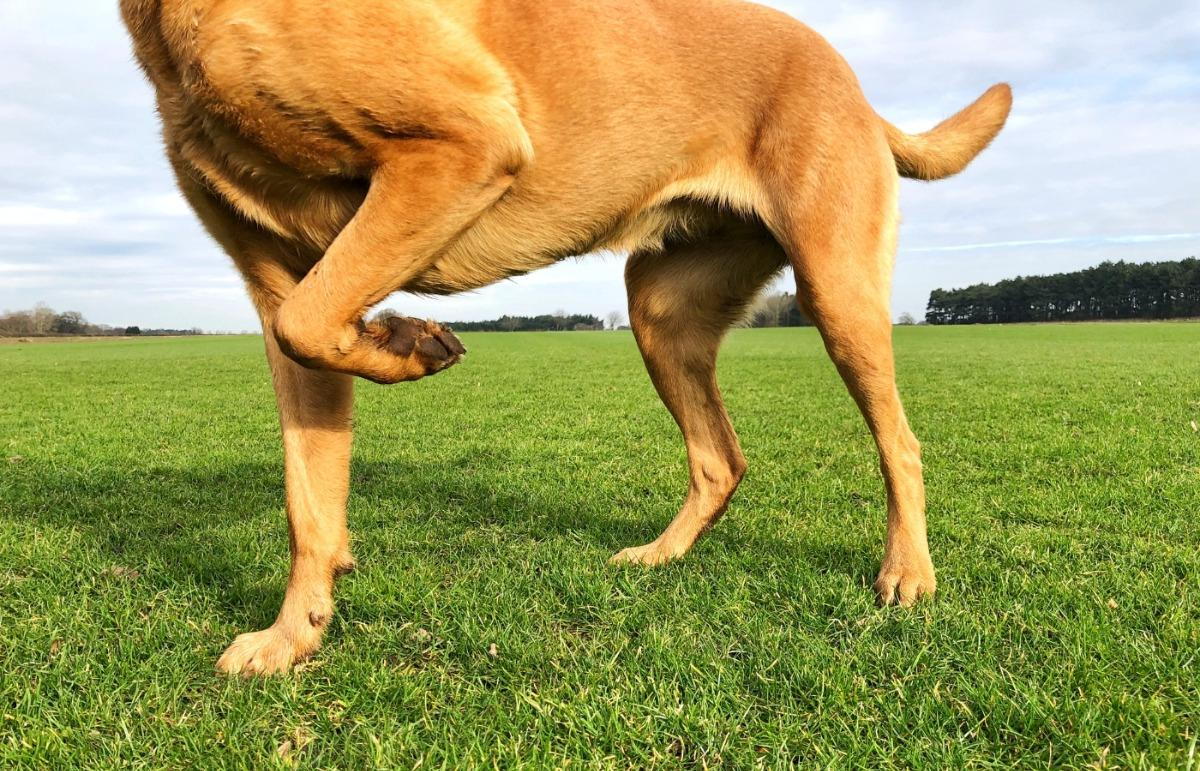Causes of Limping in Dogs and How to Treat

- posted: May 23, 2024
Every pet owner has concerns when seeing their furry friend in pain, especially when involving limping or stiffness. A limping dog raises many questions and concerns. In this post, we'll dig into the common causes of limping in dogs, what to do if you notice your dog limping, and when it's time to seek professional veterinary care.
What Are The Signs?
Limping in dogs can be visible in various ways, from a slight hobble to favoring of one leg. Some common signs of limping include:
· Holding the leg up off the ground
· Refusing to put weight on the affected leg
· Visible swelling
· Limping that worsens with activity
· Slow when standing up on all 4 paws
· Unable to jump on and off bed and/or couch

What are Some Common Causes of Limping in Dogs?
Injury: Trauma from accidents, falls, or rough play can result in limping. This could include muscle strains, ligament sprains, or even fractures.
Arthritis: Just like humans, dogs can develop arthritis as they age, leading to joint pain and stiffness.
Infections: Bacterial, fungal, or viral infections can affect the bones, joints, or muscles, causing pain and lameness.
Orthopedic Conditions: Conditions like hip dysplasia, luxating patella, or cruciate ligament tears are common problems of limping in dogs.
Foreign Objects: Sometimes, dogs can step on sharp objects like thorns, glass or foxtails leading to pain and limping.
Tick-borne Diseases: Tick-borne illnesses such as Lyme disease can cause joint inflammation and lameness in dogs.
What to Do if Your Dog is Limping:
Assess the Situation: Determine the severity of the limp and whether there are any visible signs of injury.
Rest: Encourage your dog to restrict activity to prevent further injury.
Examine the Limb: Carefully examine the affected limb for swelling, cuts, or signs of trauma. Be cautious as some dogs may be sensitive and may snap if in pain.
Apply Cold Compress: If there's swelling, applying a cold compress can help reduce inflammation and alleviate pain.
Contact Your Veterinarian: If the limp persists for more than a day or is accompanied by other concerning symptoms such as fever, lethargy, or loss of appetite, contact your veterinarian for further evaluation.

When to Seek Veterinary Care:
While some minor limps may resolve with rest and home care, it's essential to seek veterinary care if:
- The limp persists for more than 24 hours
- There are signs of severe pain or distress
- There's visible swelling, deformity, or open wounds
- Your dog is unable to bear weight on the affected limb
Conclusion:
Limping in dogs can be stressful for both pets and their owners, but understanding the common causes and appropriate steps to take can help ensure appropriate treatment. Always prioritize your pet's wellbeing and don't hesitate to seek professional veterinary care if you have any concerns about your dog's health and mobility.
Office Hours
8:00 am - 7:00 pm
8:00 am - 7:00 pm
8:00 am - 7:00 pm
8:00 am - 7:00 pm
8:00 am - 7:00 pm
8:00 am - 4:00 pm
8:00 am - 4:00 pm
Location
Find us on the map
Bixby Animal Clinic
3938 Atlantic Ave
Long Beach, CA 90807, United States

